By: Thorsten Overgaard. November 20, 2016.
Add to Flipboard Magazine.
Often there is a lack of understanding of the publishing business amongst freelance photographers
Publications exist for and by advertising. It's always been like that, and that's why we have seen through the years that in crisis where advertisers cut down on their advertising budgets, the editorial content shrinks with it.
Magazines and newspapers run “thin,” that is with little advertising, and consequently, little editorial content.
First they go thin, and then often they reduce the number of issues into semi-monthly, or quarterly, if the publication isn't suspended entirely.
Globally, as well as locally, it's a trend that has been easy to see. The local newspapers once had so much money they didn't know what to do with it. Some of it they spent competing with other local newspapers, and then eventually with the Internet starting in 1995, their revenue stream vaporized and so did the overall competition. There simply weren't resources to keep several local newspapers going, so many suspended publication.
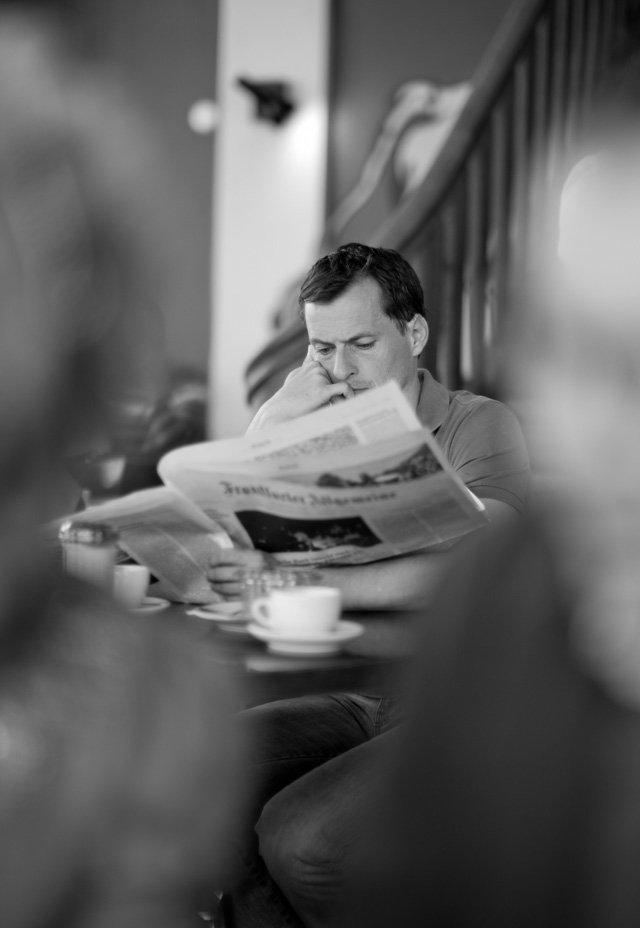
Leica M 246 with Leica 50mm Noctilux-M ASPH f/0.95. © 2014-2016 Thorsten Overgaard.
Internet and free newspapers
1995 marked not only the beginning of the Internet (long before newspapers and magazines realized what that meant), but it was also the year when Modern Times Group in Stockholm, Sweden introduced the first free newspaper: "Metro" – a trend that soon spread globally and escalated with many new free newspapers being distributed to households, on the streets and on train stations.
For you as a photographer, for a while it looked like a new golden age of publishing. But in reality, the new free newspapers (and soon, free internet news), carried a limited amount of content. The demand for content wasn't big in a free newspaper, and the subscription newspapers followed this trend in their attempt to cut costs down to match the competition on getting advertisers.
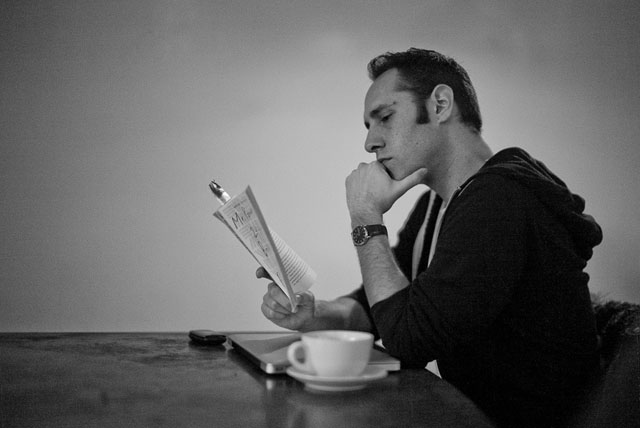
Leica M 240 with Leica 50mm Noctilux-M ASPH f/0.95. © 2014-2016 Thorsten Overgaard.
Who reads a publication without content?
If there is a natural law of publishing, it is that without content, nobody cares to open the newspapers, and without readership, advertising is not happening.
Somewhere along the line the people running newspapers and magazines oversaw this little detail about the importance of content. What they focused on was the expense of creating content versus the need for advertising revenue.
Not only did they cut the content down to the bare necessity, they also copy-pasted and rewrote their remaining miserable content, from other media. They ceased to send out writers and photographers.
Reducing cost of content
In many countries, a group of newspapers and websites will have the same owner, so to further reduce the cost of content, the fewer number of photographers and writers employed were required to supply material to not only one newspaper, but share it across the platforms.
What you could read on one website in the morning you could read on all other websites and in all printed newspapers throughout the day.
For the content creators, the photographers mainly, it also implied that where they before owned their photographs and got paid for every use, they now supplied to seven newspapers, or something like that, without getting paid for more than one.
(Related article: "What is Copyright?" on why newspapers must pay for using photographs, even when they find them on Facebook or on the Internet)
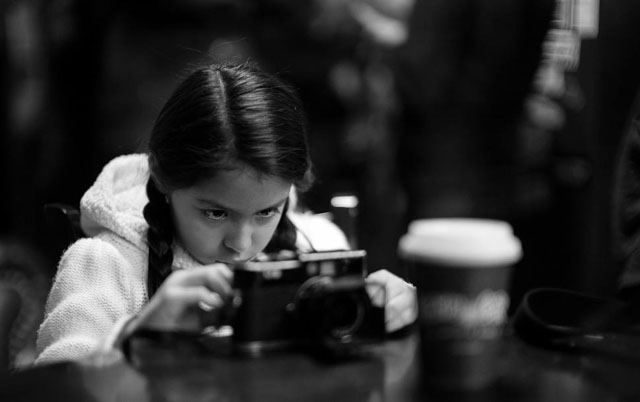
Leica M 240 with Leica 50mm Noctilux-M ASPH f/0.95. © 2013-2016 Thorsten Overgaard.
| |
|
|
|
|
|
| |
Join the New Thorsten Overgaard
Photography Extension Course
"My wife game me this course and I absolutely love it.
Now I think more in light and shadows. Used a lot of the techniques on a recent trip and
my photos have improved a lot. Well done, Thorsten!"
S.N. (Mexico)
"I am happy with my purchase of the extension course. Well written, easy to understand"
K.D. (USA)
“I very much enjoy the incredible knowledge”
V.V. (United Kingdom)
"Addictive, beautifully and simplistically written. Just amazing. Cleared my concepts"
V.P. (USA)
"The extension course is the best course I read about photography (and I'm still at the beginning)"
M.S. (Luxembourg)
"I'm already in page 81 of the Extension Course, and your communication and words provoked a change in me at an aesthetic level that I felt but I couldn't explain"
C.L. (USA)
|
|
| |
|
|
|
|
|
| |
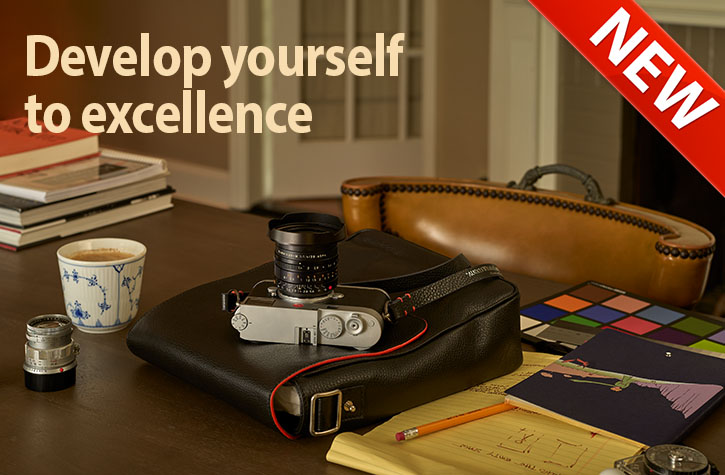 |
|
| |
|
|
|
|
|
| |
|
|
|
|
|
| |
New: The Digital Photographer's Extension Course
Learn the basics of photography with Thorsten Overgaard
I teach you the basics of photography in an easy-to-understand and step-by-step way that anyone from age 12 to 90 years can understand and easily apply. This extension course is for everyone from 12-90 years.
The intention with this extension course is to get you going in your photography adventure with lightning speed and inspire you to reach to new heights.
Enjoy!
Specially tailored for Leica and digital photographers.
The waiting list is over!
After a couple of years with a long waiting list, I have finally redesigned the course so I can handle the students interested in this course. Not only that. The number of pages has gone up from 120 to 340..!
You work at your own pace after you recieve the full package of material via mail. It works as PDF on computer, iPad, Kindle, or - if you like - make your own print.
More info ---> |
|
|
Join the Home School for
Leica and Digital Photographers

Only $998.00


Buy now. Instant delivery by mail.
ITEM #2140-0122 |
|
|
| |
|
|
|
|
|
| |
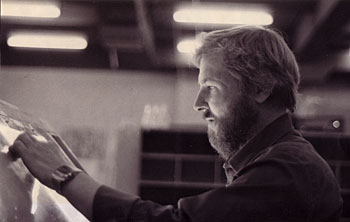 |
| |
My dad was a typesetter on a local newspaper back when journalists would submit a manuscript made on a typewriter and the typesetters would set the letters in lead. This picture is from the beginning of the computerized newspapers in 1984. My dad and my uncle, who was also a typesetter, used to say, “Become a typesetter. There will always be need for typesetters.” © 1984-2016 Thorsten Overgaard. |
| |
|
The suicide of mass media
Seen over time it's a suicidal strategy to reduce content, both in quality and quantity. It would be like if Hollywood made movies without actors and all you got was to sit in a cinema and eat popcorn and look at an empty screen.
Nevertheless, the strategy of cutting down costs on content had already started in the 1980's when typesetters and their flair for design and spellcheck was cut out from newspapers, and the writers were asked to submit their articles directly via the then-new-and-fancy computer systems. That's why newspapers started having spelling errors. They cut out the spell checking.
You kind of lose confidence that a newspaper has it right when they have the spelling wrong. Nevertheless, that's what happened. For a while some newspapers "hired" retired people to spellcheck, but also that was cut out eventually.
It's not that, for example, The New York Times isn't a well-produced newspaper and website. They are doing a great job, actually, except that they are twenty years late with it. Or actually, their content is not 20 years too late, but their business mode is the same as 20 years ago. And, such is the case with many other newspapers which have been around for a while.
You could say that if the traditional newspapers had given up the relative small amounts of subscriptions (that is also extremely expensive to administer) and instead had gone out as free newspapers, their circulation and thus advertising value would have increased and they might have been better off. With their high quality then they would have made it very difficult for new, free newspapers and free websites to get any readership. But they stuck with the old ways, hoping it would all return to how it used to be. After all, it was very comfortable being a newspaper before it became really uncomfortable.
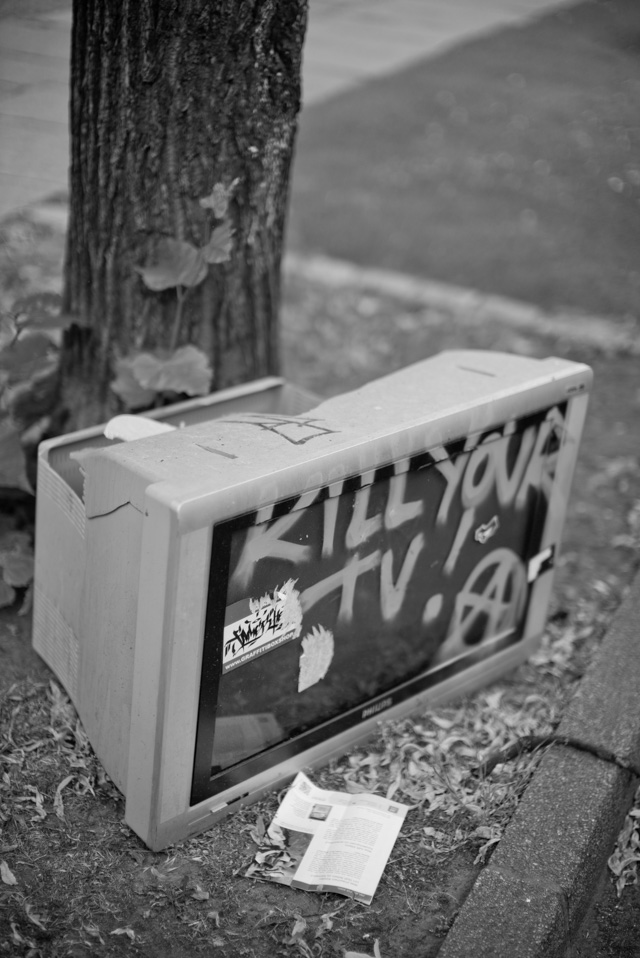
Kill your tv. Leica M 246 with Leica 50mm APO-Summicron-M ASPH f/2.0. © 2014-2016 Thorsten Overgaard.
Increasing revenue of advertising
Mainly in today's magazines you will notice that most stories are very short, and many are written by interns about celebrity gossip, because it is a high-interest subject, and can be written without leaving the building.
What you notice as a photographer is that there are very few feature stories where the photography is not sponsored by brands appearing on or by the persons in the photos. Well-known actors don't just appear as themselves, but are appearing as wearing brands that the magazine is paid to show. In return, the actors new movie is getting promoted.
Ideally, every square inch of “content” is sponsored, and every second page is an advertisement. That's the reality of most of today's magazines.
Also medical promotion is big in today's media, and has been for many years. If you think the media is concerned for your health, that's not why they talk about which pills you should take, or which diseases you should go see your doctor about. It's just one of the revenue streams.
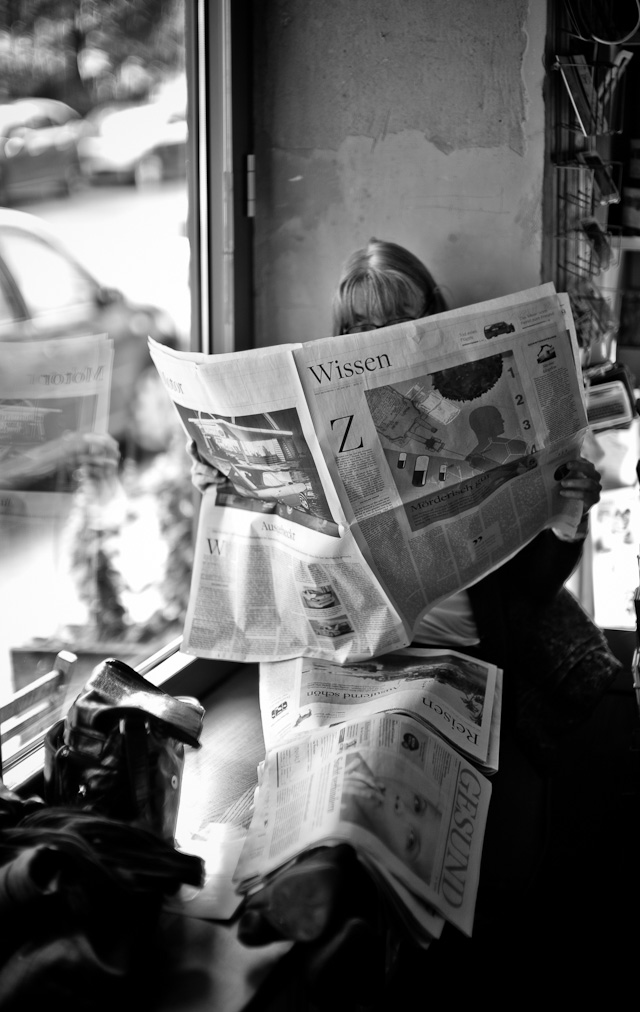
Leica M 246 with Leica 50mm Noctilux-M ASPH f/0.95. © 2014-2016 Thorsten Overgaard.
The photographer's role in today's media
For you as a photographer, where do your storytelling pictures fit into all this? Well, the reality is that photography as most of us would like to perform it, doesn't fit into today's media.
Back 10 years ago I found an editor in Denmark who shared my interest for real stories from the street. Together, we agreed I would submit a picture with a story every day about what happened in the local world.
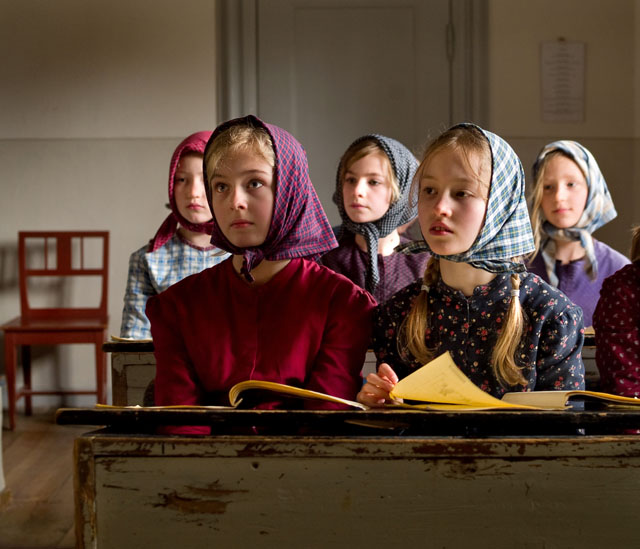
From my local reportage years: The school kids from "Rosenvangsskolen" visits The Old Town museum where they participate in s school class of 1864. They are dressed in the clothes of that time and placed like then; the kids of the finest families in front. They learn about being paddled, whipped and put in the corner. They sing the songs of that time, and also the local priest comes to examine the children. At that time Denmark was (once again) invaded and in war with Germany so that was part of the school also: "Don't talk to Germans in the streets". Leica R9/DMR. © 2008-2016 Thorsten Overgaard.

The priest visiting the class of 1864 in all his authority. Leica Digilux 2. He urges the children to pretend they don't understand Germany if they meet any Germans in the streets. © 2008-2016 Thorsten Overgaard.
We expanded the reportage photography to a 14 – 20 page picture-based editorial story in the newspaper's monthly magazine about historic buildings such as the cathedral, the theatre and more. My hometown is an odd place with just 250,000 citizens, the second-largest city in Denmark. Yet, 120 years ago it was the place for the World Expo(!) and a lot of entrepreneurs who build a lot of things and new business. Apart from making me wondering how they all ended up right there in that small place, at that time, they made some interesting things that is good subjects for stories.
Now, that was fun doing, and of course it was a success with its readers. If there is one thing newspapers have always had success with, it's interacting with their own readers' daily lives. If ABC interviews you on the street, which television channel will you be glued to for the next week? That one, of course.
It's not that it came by itself. I would pitch ideas very often, and somewhat half of the projects I suggested went through. Very few ideas came from the newspaper as assignments. I think the editor was the only one who saw the value in making local stories rather than picking up press releases and following “current news”. But he remembered how it used to be to be a local newspaper not trying to be a global newspaper.
Looking at how I work with media today, it's the same. I tell I am going to Tokyo and Berlin and ask if we should do this and that while there. If I didn't ask or pitch ideas, very few things would happen. Much of what media do today is inspired by other media: They watch CNN, and if they have a story, they want it too.

From one of my local reportage throughout the Aarhus University Campus. Is visited every area of the place for a 20-page photo story. This is seen from the university park. A professors window with some bicycles parked outside. Leica R8/DMR. © 2007-2016 Thorsten Overgaard.
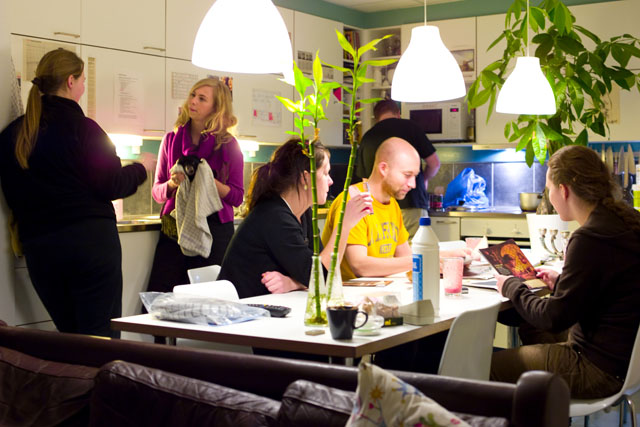
From my years doing local reportage I visited the university students kitchen during dinnertime. Leica R8/DMR. © 2007-2016 Thorsten Overgaard.

From my local reportage years: Visiting the basement under Aarhus University where teams of scientists from other countries are visiting. Surprising to most people in the city who doesn't know, the second-largest underground particle accelerator in Europe is under our city! I felt like discovering a secret facility visiting the ISA (Institute for Storage Ring Facilities in Aarhus). The largest one is the CERN which is well-known to most.
The photographer as an entrepreneur
Getting that job then was a piece of entrepreneurship. I wanted to work for the newspaper because they used photographs, and I thought they might as well use mine. And I had a personal mission with my photographs rather than taking over what someone else was already doing.
That is more and more the scene for the photographer today. While many formal educations for photojournalists prepare the future photojournalist for their work on a newspaper or magazine, the reality is that the majority will be freelancers when they leave the school.
An education in how to be self-employed, an entrepreneur and an artist, would be more fitting as that is the reality of being a photographer today.
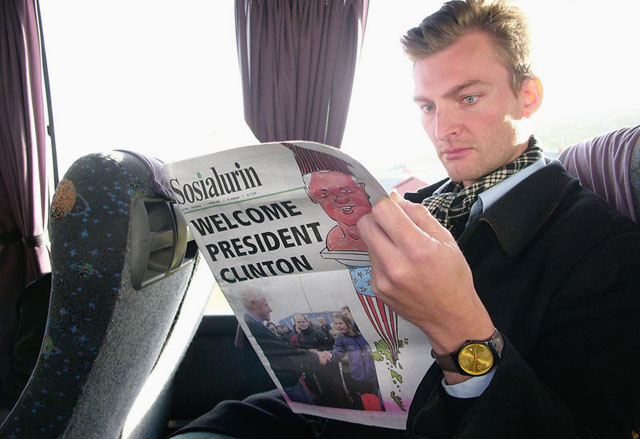
Danish writer and editor Oliver Stilling reading the newspaper in the press bus in the Faeroe Islands during Bill Clinton's visit which we covered together for a major Danish magazine. (See my story "Photographing President Clinton"). Oliver coincidentally today runs a very innovative newspaper, Foljeton.dk in Denmark - a storytelling subscription-news-page that is made to be read on the smartphone, cutting things down to the essential by focusing on few issues, and then write relatively lengthy, extremely competent and well-written stories on those select subjects. "Big stories for small screens", it started just one year ago. Subscription is $8 a month and the project is based on subscribers, not advertising. Leica Digilux 2. © 2007-2016 Thorsten Overgaard.
Making the reality into news stories
Danish photographer Jan Grarup used to work for a newspaper and would get sent to any war or catastrophe within hours. That was his life from he was early in his 20'ies. Then he stopped working for the newspaper. He still wanted to go to cover relevant stories, for example in Somalia.
He had been covering Somalia for 20 years, so he wanted to keep following the story. He asked the newspapers, and they basically said it not news, it's the same as always. But Jan Grarup wanted to go, so he decided to finance the trip himself by selling prints. I was in on that with many others, and he managed to raise the budget of about $30,000 to go, which involved heavy security and safehouse besides travel expenses.
When he came home with the pictures and showed them to the media, the largest Danish newspaper made a special section of 16 pages on Sunday with a picture story in mainly black and white. Also some international magazines ran the pictures and story. From a no story, it became a big, relevant and beautifully covered story.
I always think of that Jan Grarup coverage as an interesting new way of being an entrepreneur: Instead of waiting to get told from an editor what to go cover, you have your own ideas and ideals, and that's what you do. If you do it well, they see it too. Which was what they did in this case.
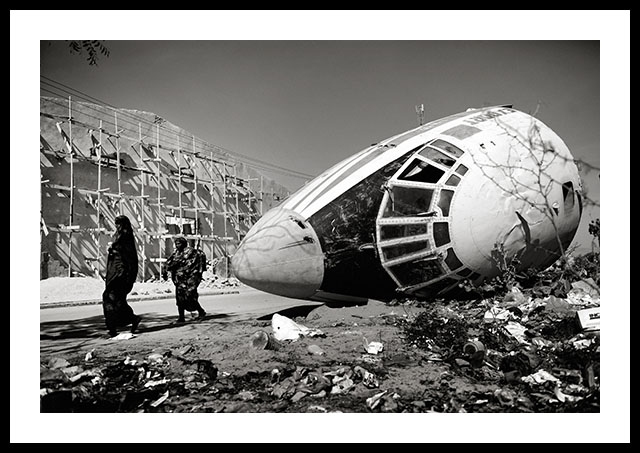
One of the Jan Grarup photographs from Somalia, a reportage fully initiated and sponsored by himself.
What is an entrepreneur?
In my view, an entrepreneur is one who get and idea and follows it because he believes in it. He knows it will work and that it is right. The opposite of an entrepreneur is an employee; one who gets told when to come to work and when to leave, and what to do when at work.
The entrepreneur may loose money, or make a lot. The employee know beforehand what he will make, it is guaranteed that he will get this much, but on the other hand also guaranteed that he won't get a dime more.
Artists are entrepreneurs. Musicians, writer and painters do what they do, and then later they will find out if it's actually as popular and great as they thought all the time it would be. So that's where it's going for you as a photographer.
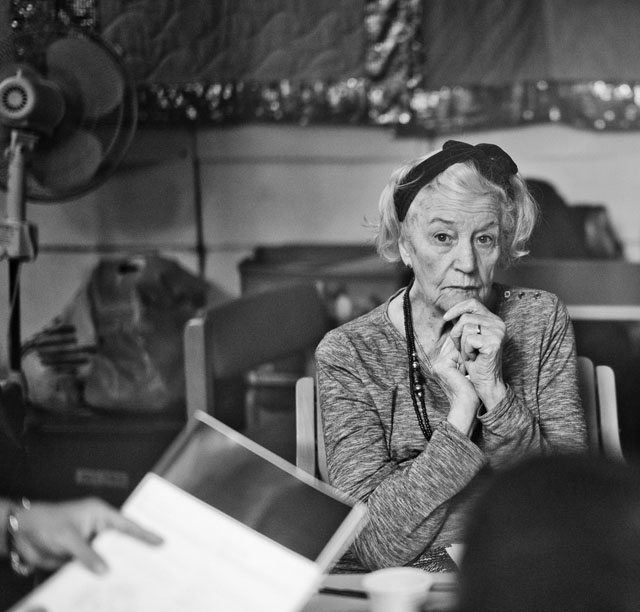
Leica M-D 262 with Leica 50mm Summilux-M ASPH f/1.4 BC. © 2016 Thorsten von Overgaard
An example of this was when I got offered to go to Africa and do a reportage. It was a press tour, so all expenses was paid. I applied immediately and got the ok to go. The idea was to do photos and stories and find the magazines or newspapers later who would use them. Often it's easier to pitch a final story to and editor because he can see what he gets and what it's about. Pitching ideas is often so time-consuming you end up spending more time selling the idea to editors than actually doing the story. I find that it's easier just do it and then let them buy it.
In any case, some days after I had signed up to spend the week it would take to do the tour, I got a call from one of the involved government-organizations that wanted all the photos to be part of their archive for two years. If we could do that, they would save to send a photographer. It was still my pictures, I just sold the rights that they could use them for specific things for two years. My time was paid well with this, and anything else I could make also would be extra.
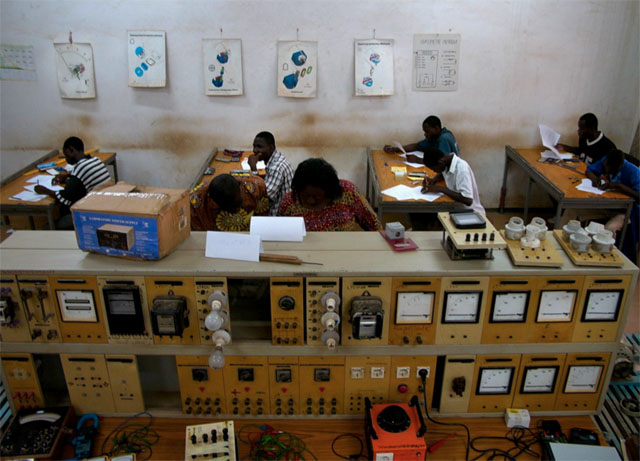
Going to Burkina Faso in 2008. See my slideshow here. © 2008-2016 Thorsten Overgaard.
The entrepreneur part was that I decided to go out of interest and believing I could make something out of it. And because I decided to go, I got the contract too. Had I been an employee, I would have asked myself how I would get paid, and as it was unknown if I would be, and by who and when, I would have to decline.
In essence, that's the difference between entrepreneurship and employment. To wait to get told, or to do what you want to do anyways, and then find a way to make it work.
Content is king
Creating content is what you must be doing. Your energy shouldn't be focused on how you might fit into an existing job on a newspaper (or even an existing way of doing business). Firstly, there is not much freedom doing a predefined job, secondly that job doesn't really exist anymore.
What does exist is a great interest for photography, stories and aesthetics. Back 100 years ago, there was a great interest for landscapes because few people had the opportunity to travel and see those landscapes. That's what made Ansel Adams. As people started to go by trains and cars cross-country and see their own country, the awe of landscape photographs became decreased.
National Geographic became big because it was a way to be an adventurer by reading a magazine. As we all travel more and more now, India is not as “exotic” as it used to be.
Things change, but well-made content always is a success, and if made really well it has a great value for many years. Ansel Adams' landscape photographs are still very valuable, and so are Steve McCurry's pictures from India. Because it's great content.
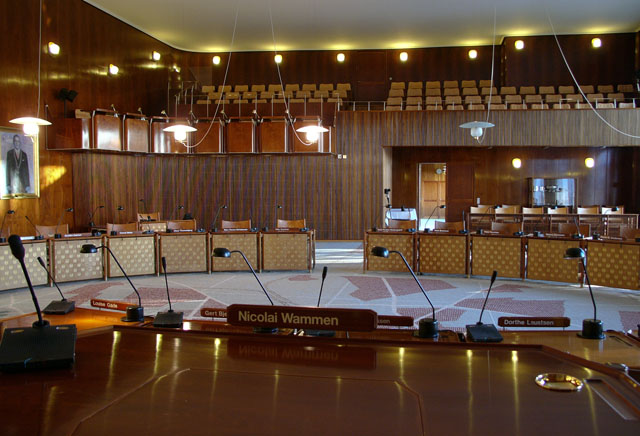
During my local reportage years I visited our local city hall that was built during World War II by later renowned architects and designers (Arne Jacobsen was the lead architect. Erik Møller was there too, and the young Hans J. Wegner had just come out of design school and did a lot of the interior; the chairs and the lamps: He later became famous worldwide for his Wegner chairs). This is a rare view of the city council hall seen from the mayors elevated seat. The council members sits in a circle around, and in the back is space for their assistants. On top left is writing space for the press, and seats for a small audience. The walls are decorated with Cuba Mahogany and paintings of former mayors.
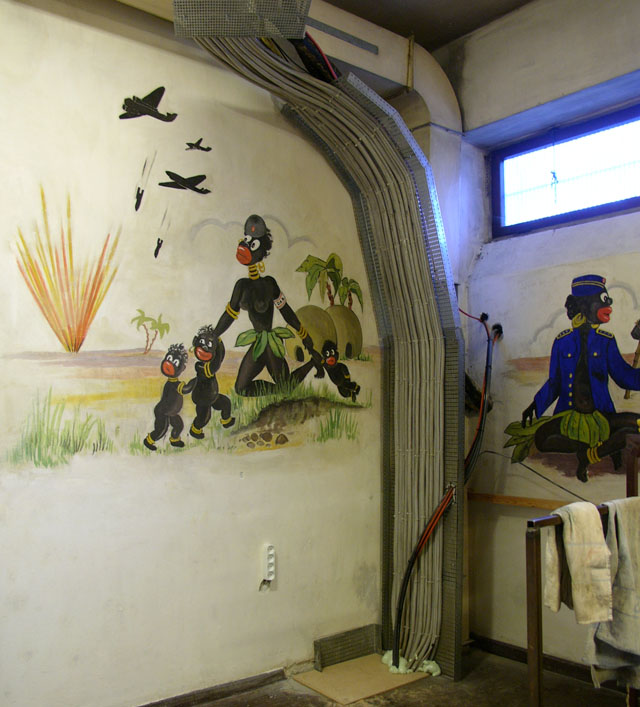
From one of my local news stories I visited the basement under our city hall. During World War II this basement was the office of the Air Observatory that would ring the alarm for incoming bombers. As a mix of artistic inspiration and boredom, they spent their idle hours painting the walls. Leica Digilux 2. © 2007-2016 Thorsten Overgaard.
Building a legacy of content
My own belief on content is that I create what I like to, and the way I like to do it. Some of it I share on my website and in my books, some of it I sell in galleries.
But the key is that I am always creating new content, more than I can publish myself. Because I believe that my photographs will have a lasting value, only the business models will change.
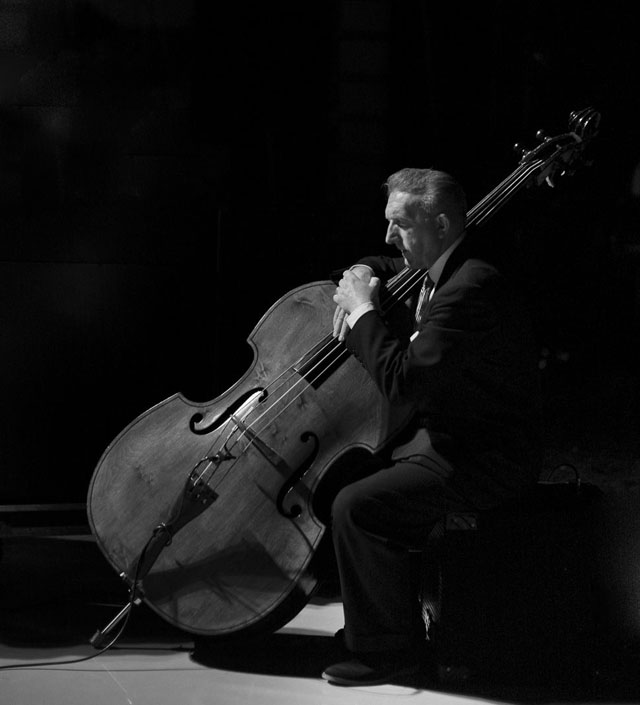
Ken Smith. Leica M 240 with Leica 50mm Noctilux-M ASPH f/0.95. © 2016 Thorsten Overgaard.
I usually say that I see myself living on an island when I'm 80, signing prints. I guess that by then I will have 200,000 - 300,000 pictures in my archive worth something for somebody, and some of them likely will be signed prints. But it's just as likely that in the future, photographs will not be sold as prints, but rather as digital usage rights as a screen saver or maybe electronic wall decoration.
I can't possibly know what the business model will be, but I can predict with high certainty that any type of original content will be interesting. Just like old songs are still listened to, old movies are still being watched, photographs are worth taking, storing and making available for future use.

Speaking of Wegner chairs: A young man having a bite of the family's Wegner chair in their home in Denmark. Leica M9 with Leica 50mm Summicron-M f/2.0 II. © 2012-2016 Thorsten Overgaard.
What you sell might not be what people buy
When I was in Miami recently, I was out photographing with a professional photographer. He complained that nobody bought photographs anymore. These days, people would rather ask where the photo was taken so they can go themselves and take their own photographs, he complained.
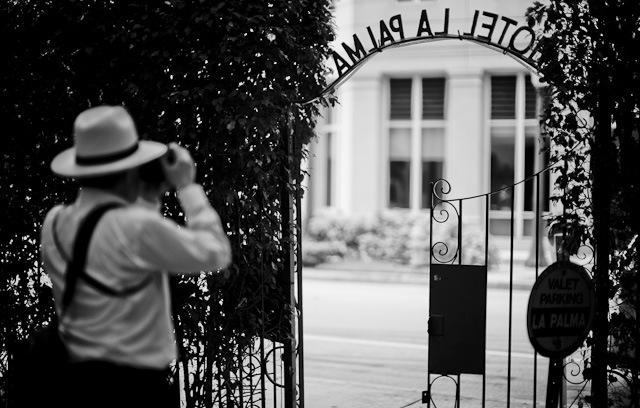
Destiny had it that this photographer had seen an interesting building in a magazine, so we decided go look for that building. We found the area, and it was quite an interesting and exotic part of old Miami, though we never found that exact building. But the experience of old Miami, that could almost have been Cuba, coined another realization and idea: If we posted those pictures for sale, for say $4 a piece, with information about the location, then we wouldn't care if people bought the photo to get the photo or the location. They would get both anyways. Maybe the photographer's skill in this case was not to create content, but to provide an audience with directions on how to make their own content and adventure.
Take that as a hint as to how you as a photographer must expand your abilities to create content, be an artist and an entrepreneur, and to keep having fun doing what you love to do, and make a living off it as well.
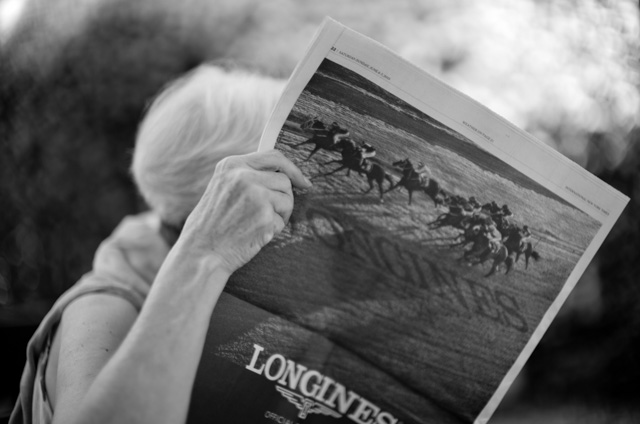
Publications exist for and by advertising. Leica M 246 with Leica 50mm Noctilux-M ASPH f/0.95. © 2016 Thorsten Overgaard.
I hope you enjoyed this "The Story Behind That Picture" today. As always, feel free to e-mail me with ideas, suggestions and questions.
![]()
